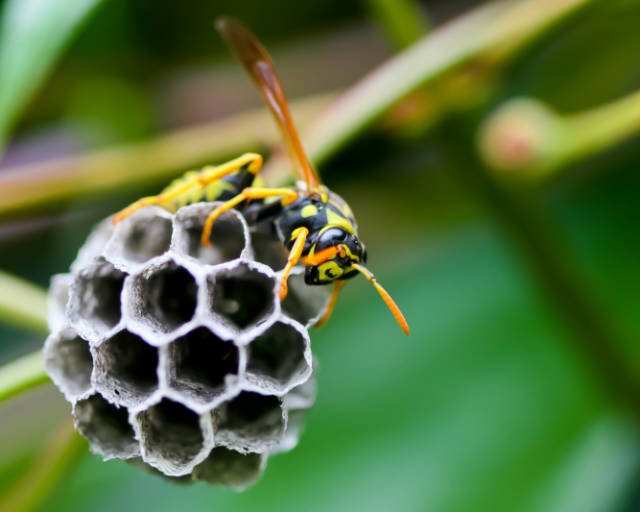Hey there, inquisitive minds! Let’s take a wild ride through the perplexing universe of wasps, those enigmatic creatures with their captivating black and yellow stripes. Hold on tight ’cause we’re diving deep into the mind-bending and mind-boggling world of these buzzing beings.
Now, here’s the kicker – wasps! What’s their deal, you might ask? They’re like the rockstars of the insect realm, strutting their stuff with that striking color combo. But wait, it gets even crazier! There’s a whole squad of wasp species out there, each flaunting its unique quirks and behaviors. It’s like a never-ending parade of wasp wonderland, and we’re about to be the VIP spectators!
(Vespula spp.)
Yellowjackets, which are in the genus Vespula, are one of the most well-known and popular types of wasps. The black and yellow color of these social wasps and their violent behavior when protecting their nests make them easy to spot. Yellowjackets often make paper-like nests in hidden places like tree branches, wall gaps, or underground burrows. They are known for eating tasty things, which makes them a common sight at picnics and other outdoor events.
Wasps that eat paper (Polistes spp.)
Paper wasps are in the genus Polistes. Their bodies are thin, and their legs and wings are long. Most of the time, they are brown or red with yellow spots. Paper wasps, unlike yellowjackets, build open, umbrella-shaped homes out of paper, which is how they got their name. Most of the time, these nests are in safe places like under the eaves of buildings or on the branches of trees. Yellowjackets are usually more aggressive than paper wasps, but paper wasps may sting if their homes are disturbed.
Hornets (Vespa spp.)
Hornets are big, scary wasps. Some species can grow to be up to two inches long. They are about the same color as yellowjackets, but they are bigger. Hornets are known for making big, closed nests in trees or bushes. In general, they are less aggressive than yellowjackets, and they will only sting if they think their nest is in danger.
Mud Daubers are in the family Sphecidae.
Mud daubers are solitary wasps that build homes out of mud that look like tubes. Most of the time, they are thin and look shiny blue or black. Mud daubers aren’t mean, and they rarely sting people when they do. They help keep spider numbers in check because their young eat spiders that have been paralyzed.
Cicada Killers (Sphecius speciosus)
Cicada killers are big wasps that mostly eat cicadas, as their name suggests. They live alone and dig holes in the ground where they can hide their food. Cicada killers are usually not dangerous to people, but their size can make them look scary.
Hornets with bald heads (Dolichovespula maculata)
Bald-faced hornets are black and white wasps that live in groups. In trees and bushes, they build big, papery nests. Even though they are called “bald-faced hornets,” they are actually a type of yellowjacket. They can be very aggressive when protecting their homes.
Understanding the different kinds of wasps is important if you want to know how they act and if they could be dangerous. Some, like mud daubers and cicada killers, don’t bother people and are good for environments. Others, like yellowjackets and hornets, may need to be treated with care. When we can tell the difference between different kinds of wasps, we can live in peace with them and understand how important they are to keeping nature in order. Whether they make paper nests or holes in the ground, each species of wasp adds to the complex web of life and reminds us of the many amazing things that live in the natural world.



